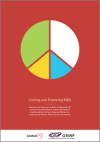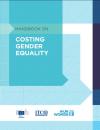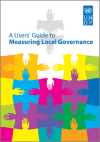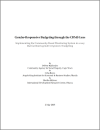FOUND 12
Examining the resources needed to implement Security Council Resolution 1325 at national level as well as the gains, gaps and glitches of financing the women peace and security agenda. Over the last decade the policy environment on women, peace and security has gained significant momentum.
Paper discussing the definition and measurement of Sustainable Development Goal (SDG) Indicator 5.c.1. (reclassified to Tier II) and comparing Indicator 5.c.1 with other SDG fiscal indicators.
Using country-level data, the paper estimates the costs of interventions aimed at promoting gender equality and women's empowerment in Bangladesh, Cambodia, Ghana, Tanzania, and Uganda. It then uses these estimates to calculate the costs of such interventions in other low-income countries.
The Handbook is a comprehensive, step-by-step guide to costing gender equality priorities.
This Guide was preared by Alexandra Wilde, Shipra Narang, Marie Laberge and Luisa Moretto UNDP Oslo, 2009.
This manual published by United Nations Human Settlements Programme (UN-HABITAT) in 2008 is designed to assist training institutions in mainstreaming gender concerns in local government capacity-building and in training related to human settlements as conducted by Habitat Agenda partners.The Sourceb
The sourcebook for Trainers was published by the United Nations Human Settlements Programme (UN-HABITAT) - 2008.
The paper suggests how the Community-Based Monitoring System (CBMS), developed and implemented in 14 countries over the last ten years with financial support from the Canadian International Development Research Centre (IDRC), can be used to facilitate gender-responsive budgeting (GRB) at the local l
This publication results from widespread participation in a UNDP network discussion entitled Towards a "Local Governance and Development Agenda: Lessons and Challenges".
The purpose of this paper, prepared by Raman Sohal Research Officer, International Development Research Centre, June 2005, is to present an overview of the existing and potential approaches and tools for identifying gender gaps at the local level.





